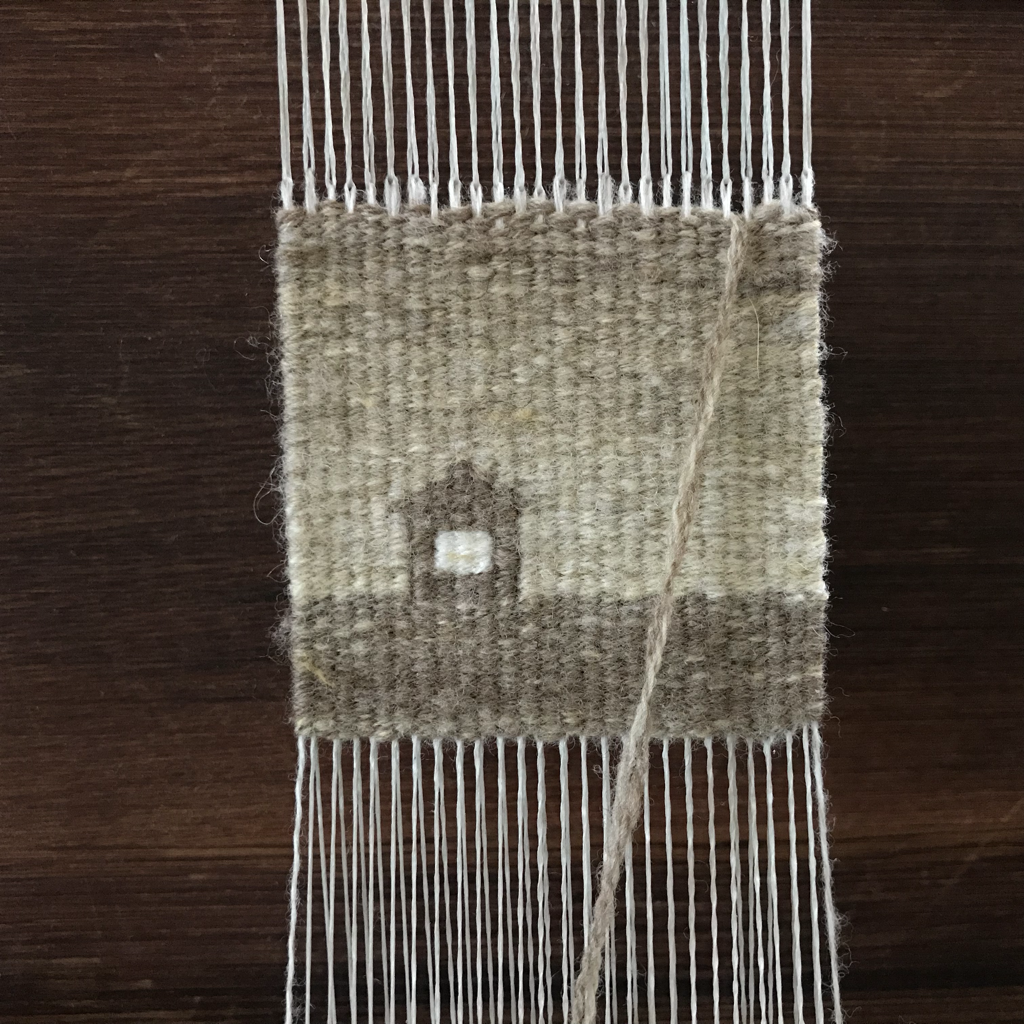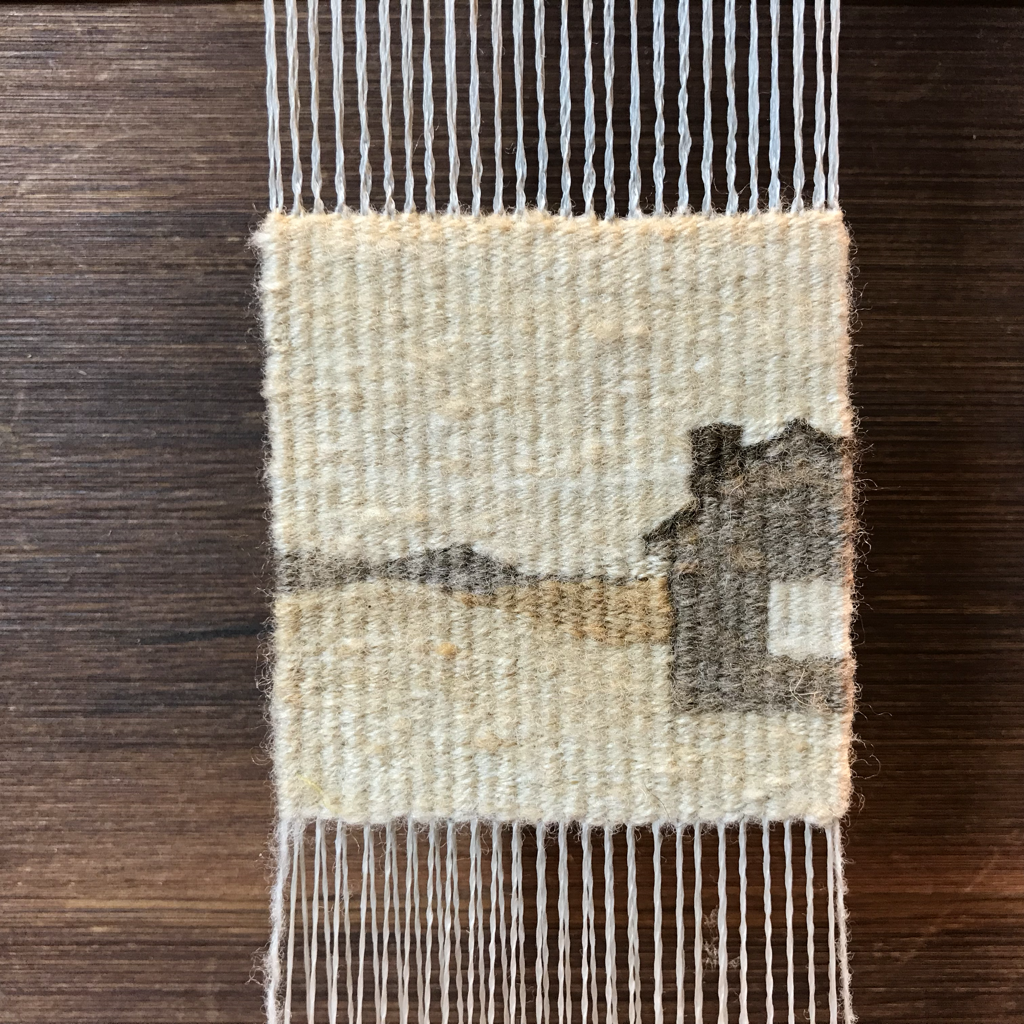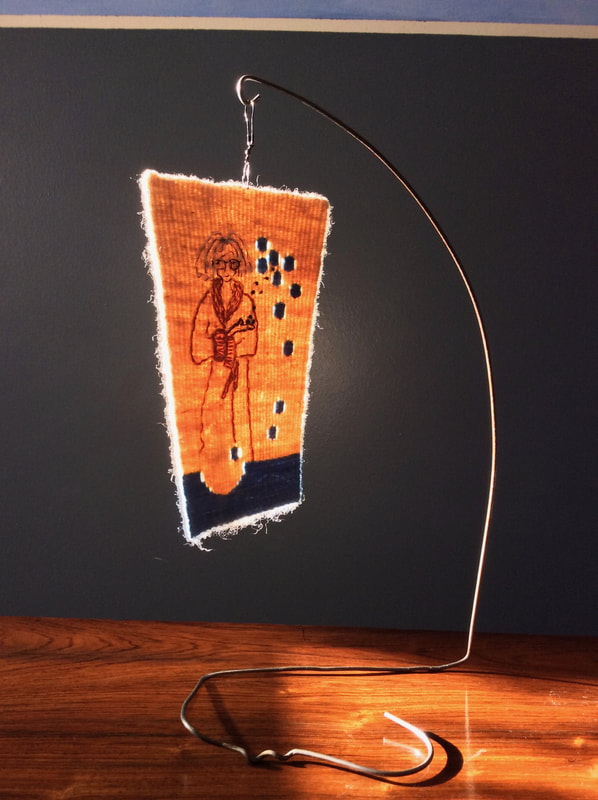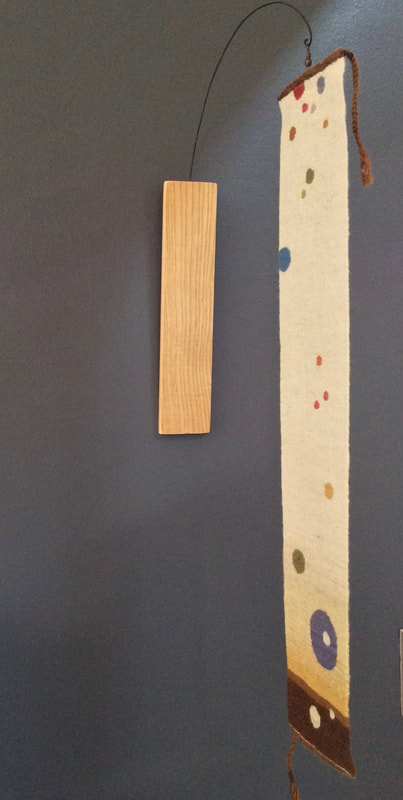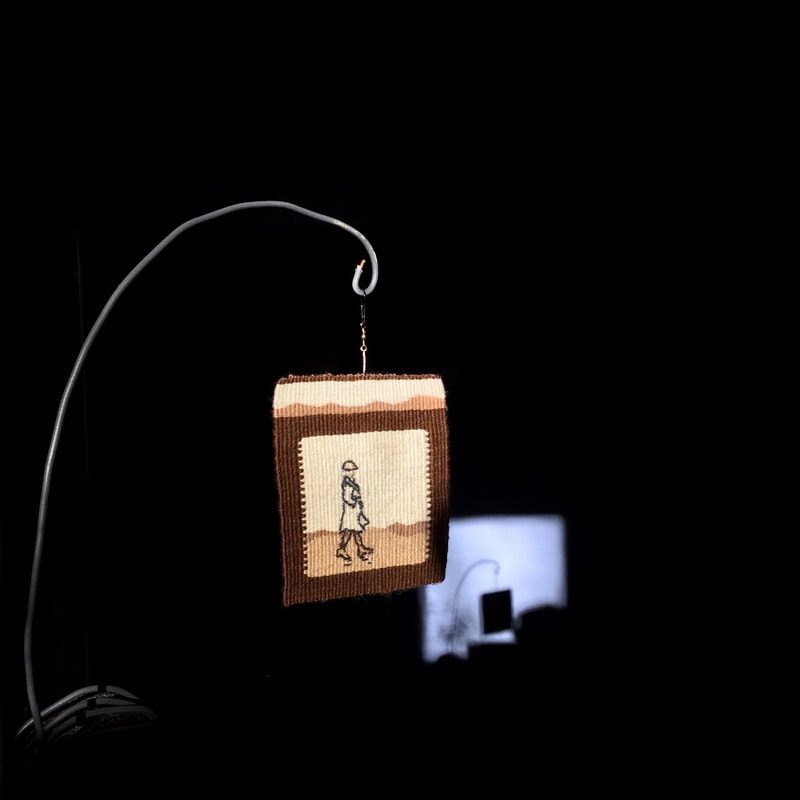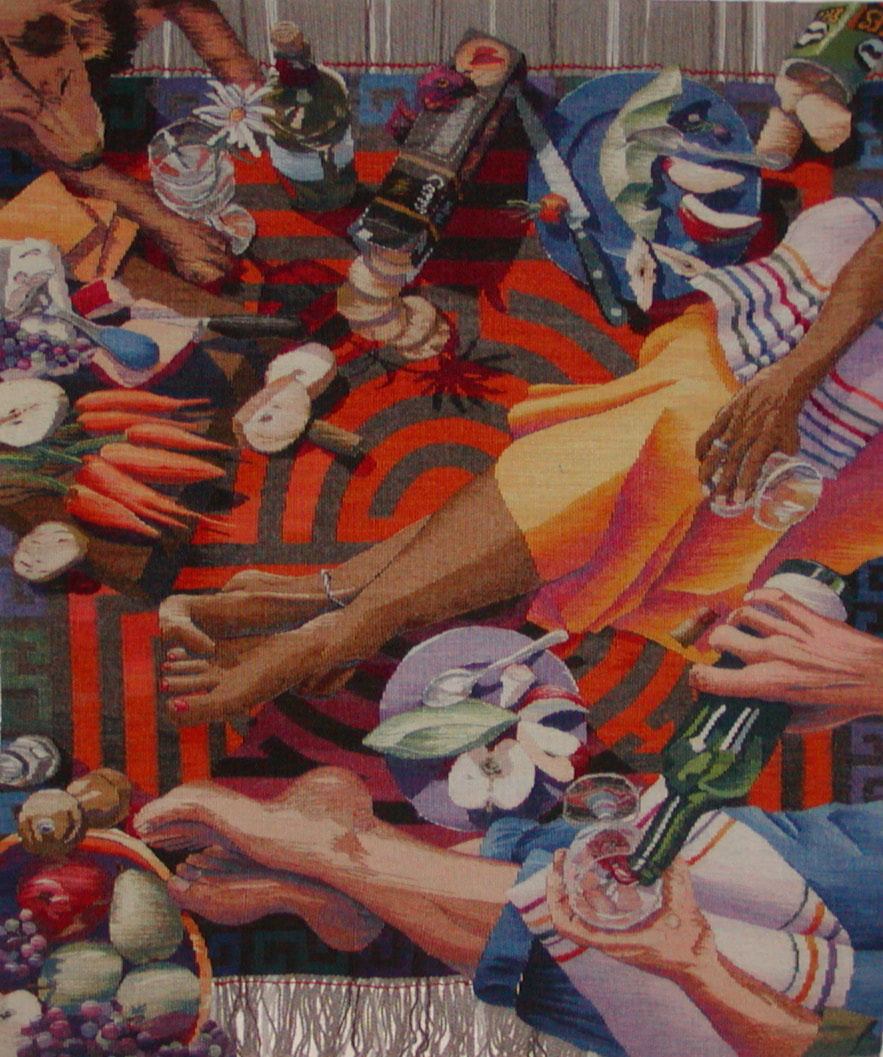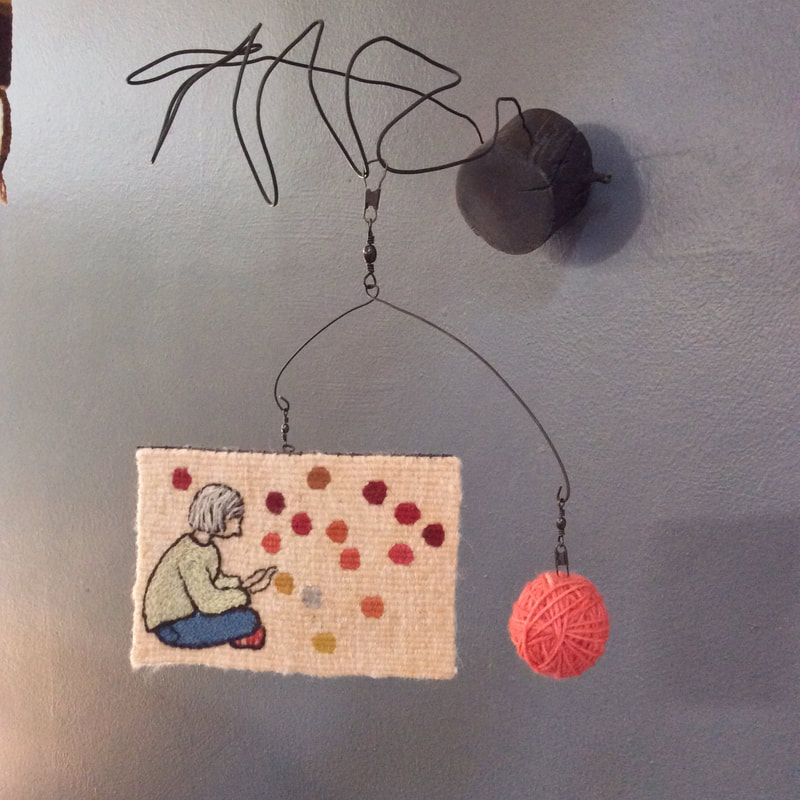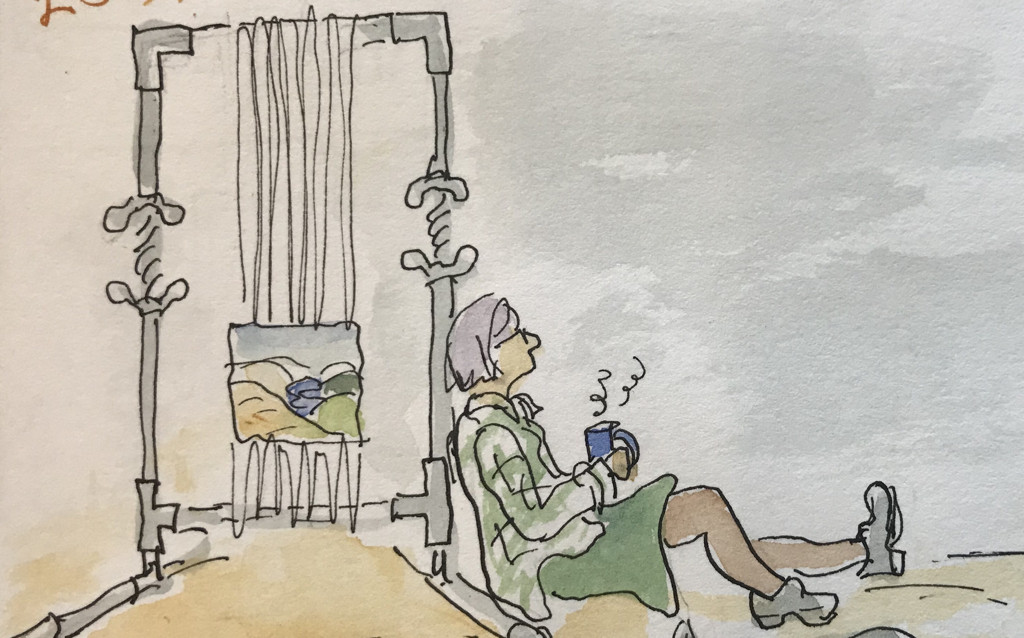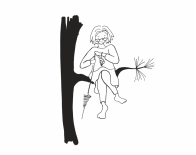You can read her whole query, and then my response, HERE,
but I've also posted some photos below,
and of course have since found more to say...
I like how it looks, I like how it feels, and I like how the cloth behaves.
The technique makes it possible to get tapestries off the wall as these photos show,
and into books as you can see HERE (this is a short video showing the turning pages of "Casting Off").
no enticing forests of ends in which set up camp.
Two sided tapestries (and I use the word advisedly as I am well aware that the two sides are NOT identical), can not only hang away from the wall, they can potentially BE a wall.
Not that I've done this, but it's an idea that awaits.
They use less yarn.
Weaving in a million ends on a complex tapestry might seem like a time consuming proposition.
Like any new skill, it could be awkward for a time.
It can be handy to have a length of yarn in just the right color waiting at the back to be pulled up and used for a new shape.
It has also not escaped my notice that when I show early work (made before I began weaving in the ends), viewers tend to be mightily impressed by the back view.
"You used ALL Those different pieces of yarn! WOW."
And sometimes a person wants to impress her viewers,
if not with the content of the imagery, then at least with the labor involved...
Oddly, one of the things I like most about working in tapestry is that many of my pieces could, indeed, be used for rugs, or blankets, or chair covers, or spend a century or so as frost protection for espaliered fruit trees as were the Hunt of the Unicorn Tapestries (now at the Cloisters in New York City)-- then be washed, dried, pressed and hung on the wall for the century after that. Not that such a thing would be ideal, but it pleases me that it is possible.
Tapestries are flexible and resilient, kind of like people.
but, alas, the technique does not seem to be too popular.
Happily however, as this is my blog, I get to keep mentioning it now and again,
just in case someone wants to give it a try.
The Instagram exchange with Rachel was invigorating but too short.
Tapestry, after all, is a vehicle for expression,
a structure that allows us to explore our psyches with yarn and shape and color,
a means of uniting ideas and substance and it can even keep us warm.
It is a medium not a set of rules,
strong enough to take whatever we ask of it,
even when we disagree.
